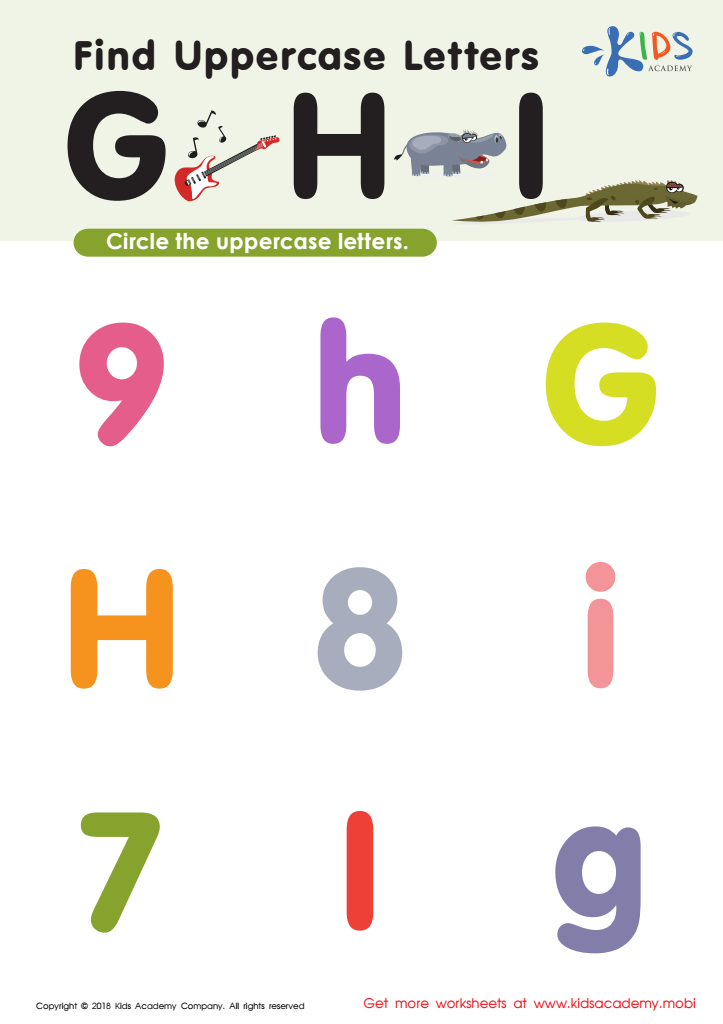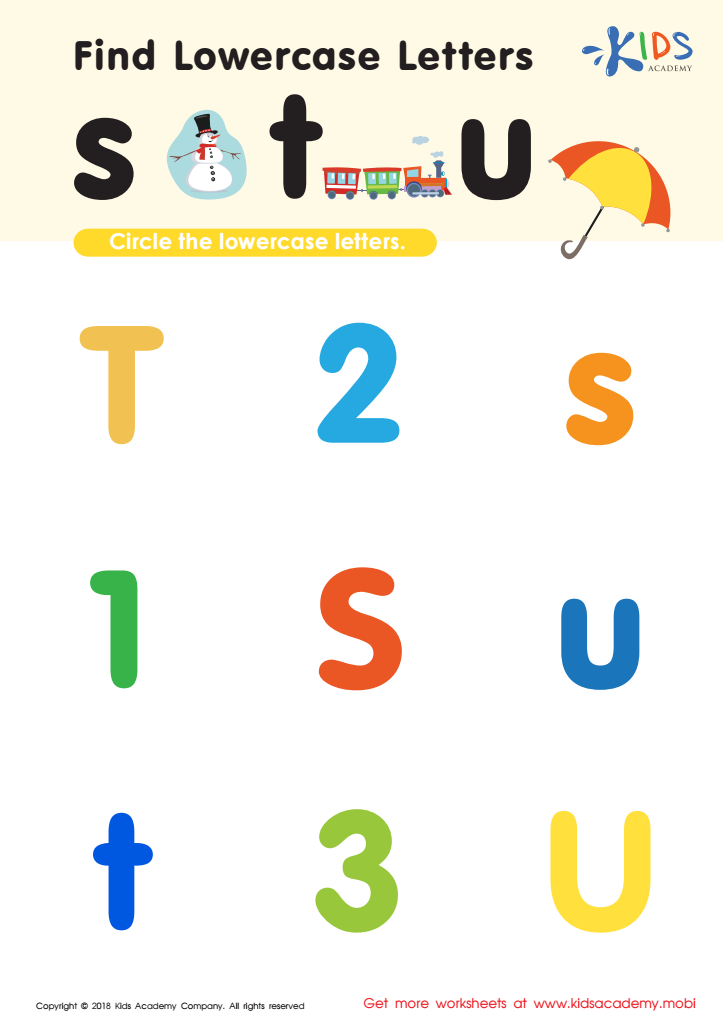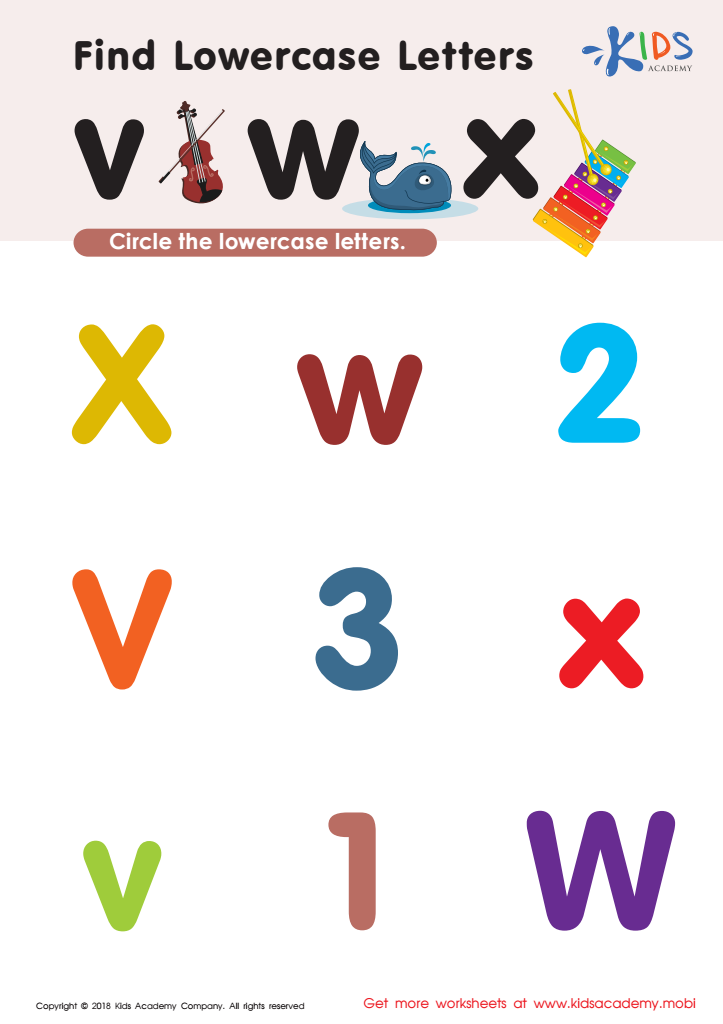Alphabet familiarity Normal Upper & Lowercase Letters Worksheets for Ages 6-9
6 filtered results
-
From - To
Boost your child's alphabet familiarity with our engaging Upper and Lowercase Letters Worksheets designed for ages 6-9! This collection features a variety of fun and interactive activities that help young learners recognize, identify, and differentiate between uppercase and lowercase letters. Worksheets include tracing, matching, and coloring exercises, ensuring an enjoyable learning experience. Tailored to different learning styles, these worksheets enhance letter recognition, boost confidence, and lay a solid foundation for future reading and writing skills. Perfect for both classroom and home use, our resources support early literacy development in an engaging manner. Start your child's journey to literacy with us today!


Find Uppercase Letters G, H, and I Worksheet


Find Uppercase Letters Worksheet


Find Uppercase Letters J, K, and L Worksheet


Find lowercase Letters s t u Worksheet


Find Uppercase Letters A, B, and C Worksheet


Find Lowercase Letters v w x Worksheet
Alphabet familiarity is crucial for children aged 6-9, as it lays the foundation for their literacy development and overall academic success. At this age, children are moving from learning letters to using them to read and write. Familiarity with both upper and lowercase letters helps them recognize words more easily, enhancing their reading fluency and comprehension skills. When children understand the distinctions between letter cases, they can navigate the diverse text they encounter in books, worksheets, and digital media.
Additionally, mastery over capital and lowercase letters supports effective communication. Children can better express their thoughts, engage in writing tasks, and develop their narrative skills. This familiarity also plays an essential role in handwriting; being able to form uppercase and lowercase letters correctly contributes to legibility and neatness in their written work.
Moreover, fostering alphabet familiarity promotes confidence in young learners. As they become proficient in letter recognition and writing, they're more likely to participate in class discussions and enjoy reading for pleasure, further enhancing their learning journey. Therefore, it's crucial for parents and teachers to prioritize alphabet familiarity as it significantly impacts children’s literacy skills and fosters a love for learning during these formative years.
 Assign to My Students
Assign to My Students












